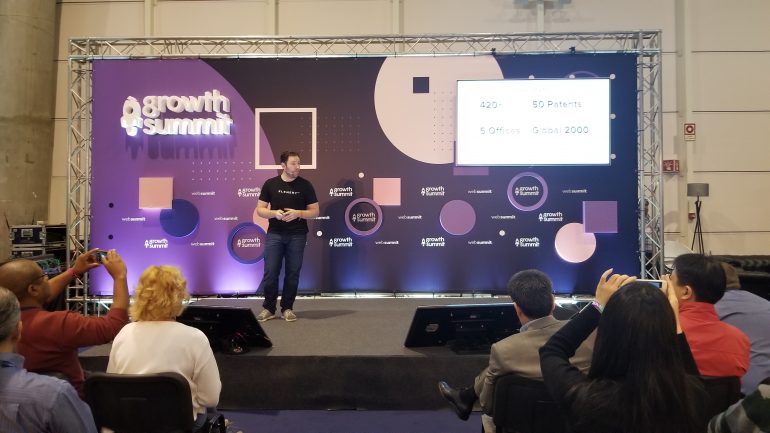Element AI provided insight into its product roadmap at Web Summit’s Growth Summit stage.
CEO Jean-François Gagné revealed the company’s focus on building the core components of an AI product from the ground up without using third-party libraries, such as natural language processing and computer vision algorithms, providing the foundation of technology that can assess the context of various situations.
“We are using these components, assembling them into products that then will solve a problem in a problem area of a business, [such as] workflow automation, decision automation, and all sorts of different tasks you’re going to find typically in an enterprise,” he said.
The intense hype around Canadian AI created an environment that wouldn’t have been forgiving if the company launched right away.
The talk included several demos showcasing the capabilities of the technology, including optical character recognition that can read receipts in real-time. “This model runs 17 percent more accurate in all of the circumstances we’ve trained it for compared to state of the art off-the-shelf,” he said. “Why can we do better and faster? It’s because we wrote the entire stack all the way down.”
The goal is to provide rich context depending on the situation that the technology is being used; in another demo using a police report, Gagné said its character recognition won’t read it as a child doing something else, but will read it as a car accident.
Element AI is also focused on AI enablement tools. “One of the biggest challenges with AI systems is no longer to write the rules. If you have the architecture and you have the data it should learn by itself,” Gagné said. The company has developed an active learning enablement environment that he said reduces the number of labels required for tagging datasets by “10 to 100 times,” adding that this reduces the amount of time from weeks to days.
This technology is providing the backbone for products Element AI is building; some simple use cases outlined include the ability for the AI to read receipts associated with an insurance claim and flag any problems to a human. “If you’re there to label or validate data entry—which is a lower level value contribution, but still very important—we classify all the alerts related to that, and a diagnostic screen is essentially going to be there for you to make an analysis of the situation,” he said. “In this case, we can detect fraud.”
The company has also built a ‘question box’ that can leverage structured and unstructured data in an organization, and build out answers to a question. “At this point, we are at the tactical level, so you can ask questions that are facts. You can also do technical questions like ‘I’m seeing a problem here, how can I leverage this information or what is the bottleneck?'” Gagné said. “Depending on the situation, the system can answer using natural language and being able to provide the best step in the process it requires.” The end goal is to be able to answer more strategic questions.”
CEO Jean-François Gagné said the company is now coming out of its stealth phase.
Launched in October 2016 with Gagné, Nicolas Chapados, and Yoshua Bengio, Element AI’s stated mission was to act as a ‘startup factory’ partnering with researchers and entrepreneurs to develop technology and help companies develop an AI strategy. Since then, the company has raised a historic $137.5 million Series A, with CEO Gagné telling BetaKit at the time that Element AI wanted to be a trusted “AI partner” for businesses.
In an interview with BetaKit, Gagné said that the lack of a product or clarity around how they work with businesses was planned. The company didn’t want to create uncertainty in the market with a product that wasn’t fully ready and stayed heads down building its first set of products. The intense hype around Canadian AI created an environment that wouldn’t have been forgiving if the company launched right away, he suggested.
“Given the scale at which we were going to do it, the amount of uncertainty, and some pivots we needed to do around these things, it was preferable for us to stay quiet; we had a lot of traction,” he said.
He said the company is now coming out of the “stealth phase,” and showcasing its product portfolio.
“We’ll be rolling out more information on all of our offerings, and eventually next year, we’ll be revamping the website and making it way more obvious,” Gagné said, admitting that the messaging on buying products and accessing AI-as-service is vague. “We’re not specific about exactly what it means, but we’re going to be opening up and showing that to the world in early 2019.”
To date, Element AI has grown to over 420 employees.
Douglas Soltys contributed to the reporting of this story.


